This travel wiki page of Thailand will help guide travelers with quick and relevant information to consider when planning and visiting the country. It is difficult to find all the relevant information on Thailand’s culture, safety, travel restrictions, and things to do, so we summarize it all here. If anything is stale or outdated, please let us know! Let’s dive in and explore more high-level information as a Thailand trip planner.
Last updated April 25th of 2023.
Table of contents
National Information & Culture
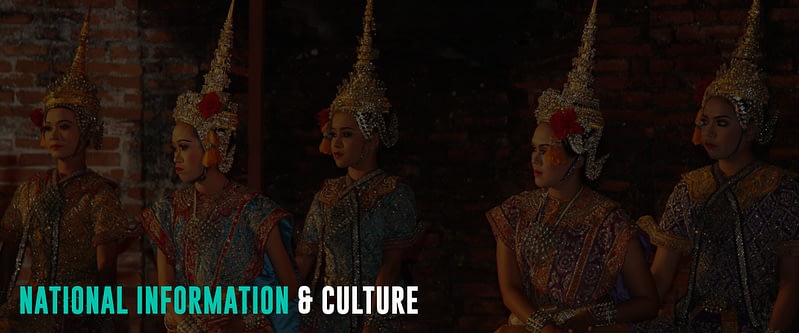
Historically known as Siam and officially the Kingdom of Thailand, Thailand is a country in Southeast Asia situated at the center of the Indochinese Peninsula. The country shares land borders with Myanmar, Laos, Cambodia, and Malaysia. It also shares maritime borders with Vietnam, Indonesia, and India. Bangkok, the capital city, is the economic and political hub of the country, while the Thai Baht (THB) with the symbol ฿ is the official currency.
Thailand is the second-largest economy in Southeast Asia, with a diverse economy that includes agriculture, manufacturing, and tourism. It is a popular tourist destination receiving millions of visitors annually for its beautiful beaches, ancient temples, delicious cuisine, and welcoming people.
Thai culture is rich and diverse, with influences from China, India, and neighboring Southeast Asian countries. The country is known for its unique traditions, including the famous Thai massage, the water festival known as Songkran, and the beautiful Loy Krathong festival.
Thai people are known for their warm hospitality, and visitors are expected to reciprocate this with respect. Buddhism is the dominant religion in Thailand, and temples are found throughout the country. However, as with any new culture, visitors to Thailand must respect local customs and traditions, such as dressing modestly and removing shoes before entering a temple or someone’s home.
Also, Thai people have high respect for and hold a deep reverence for the monarchy. For them, showing respect for the king, queen, and other royal family members is essential. As a tourist, it is also necessary to be aware of the strict lèse-majesté laws prohibiting negative comments or actions toward the monarchy.
Visit Thailand’s Official Tourism Website for more information and tips when planning your trip.
Special Travel Considerations
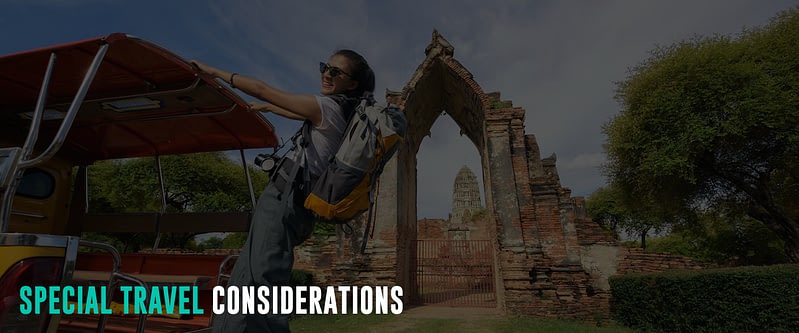
Each country and destination has rules and regulations that every traveler must consider. Hence, check the following considerations for hassle-free travel to Thailand.
Covid-19 Policy
All travelers to Thailand are not required to show proof of Covid-19 vaccination or prior testing. Hence, anyone can freely enter without Covid-19 restrictions. However, the Covid-19 protocol of Thailand may vary over time with the evolution of the pandemic. Therefore, check Thailand’s latest Covid-19 entry requirements when planning your trip.
Travel Insurance
Travel and health insurance are not mandatory but highly recommended for visitors to Thailand. However, it will be necessary for travelers whose following country of destination requires them to perform an RT-PCR test in Thailand before traveling to the country. Also, note that the insurance validity must have additional seven days from the stay in Thailand. It must cover emergency medical treatment, including Covid-19, repatriation, and evacuation. Travel insurance can protect you against the inconvenience of injury, medical emergencies, theft, and flight cancellations. In addition, it is a comprehensive protection in case anything goes wrong with your trip.
Visa Information
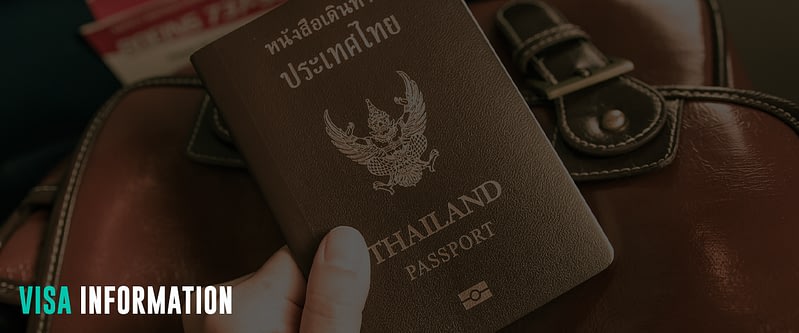
Nationals of 64 visa-exempt countries can enter Thailand without a visa and stay from 30 to 90 days, while citizens of 19 countries are eligible for visas on arrival for a fee of around $59 (THB2000). Other passport holders can apply for a Thai E-visa and choose between single or multiple entries, subject to visa fees. However, 30 countries are not eligible to apply for the E-visa and must visit the nearest Thai Embassy or Consulate. Visitors can also check their E-visa eligibility according to their country’s issuing passport.
Aside from a visa, all visitors to Thailand must have a 6-month valid passport beyond their stay, return or onward ticket, confirmed accommodation, and sufficient funds.
Popular Attractions
Thailand is probably the most touristy Southeast Asian country, as they line up to visit its incredible features. Name it, and Thailand’s probably got anything a traveler wants in a holiday. Thailand has everything from luscious green jungles, turquoise waters, powdery sand beaches, a tropical climate, and food that will challenge your taste buds like none other!
The Grand Palace in Bangkok
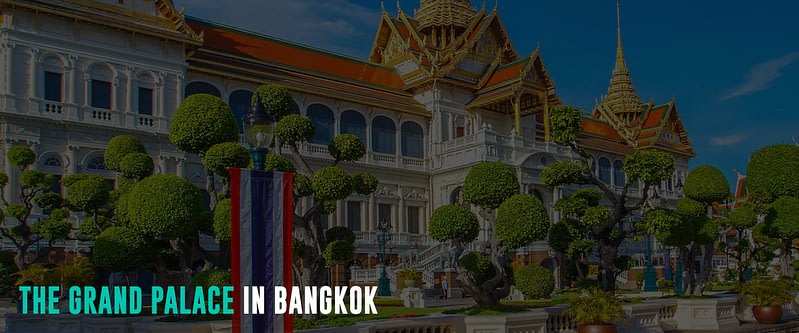
The Grand Palace is the country’s spiritual heart and is a must-visit destination in Bangkok. The complex of buildings began construction in 1782 and was the official residence of the seven kings of Siam. The site includes the iconic Temple of the Emerald Buddha, home to the sacred Emerald Buddha from the 14th century. It is essential to follow the strict dress code when visiting, with men required to wear long pants and sleeves and women not to wear revealing clothing. The Grand Palace is Bangkok’s number one sightseeing attraction, with its maze of royal halls, temples, and ancient relics, including the Temple of the Emerald Buddha. Visitors should allow several hours to explore the palace fully, and other landmarks nearby, such as Wat Po and Wat Arun, are also worth a visit.
Koh Phi Phi Islands
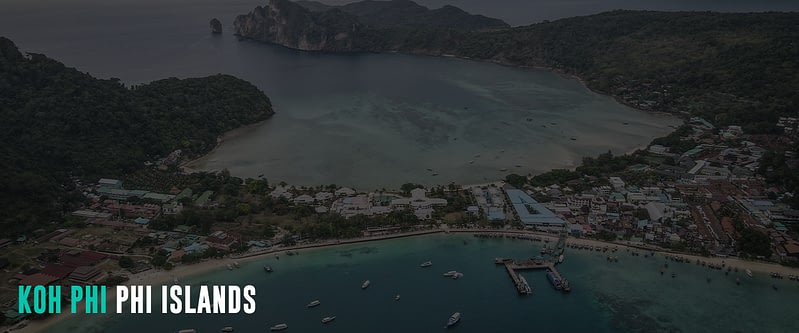
Phi Phi Islands in Thailand is a popular resort due to its clear blue waters, soft white sand, and breathtaking views. Tourists can reach the largest island, Phi Phi Don, by kayak or by hiring a small wooden boat. Monkey Beach and Long Beach are popular spots on the island, and tour operators offer packages for snorkeling, diving, and excursions to other beach destinations. Although the 2004 tsunami struck Phi Phi Don, it has been rebuilt, and a small memorial park honors those who died. The archipelago is located in the Krabi Province and is a popular destination for water recreation activities.
Railay Beach
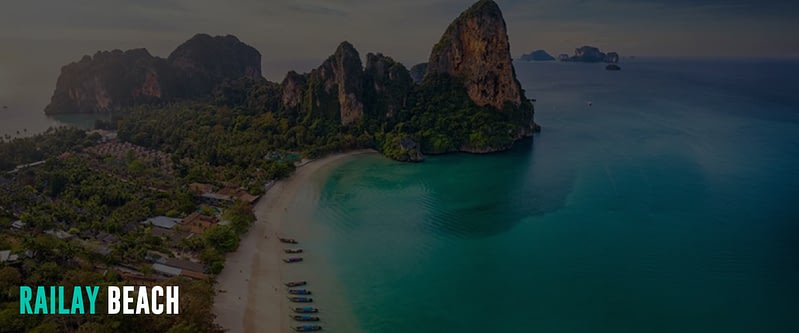
Railay Beach in Krabi province is a popular beach destination in Thailand with white sand and the turquoise-blue water. The island can be reached by boat from Krabi town and Ao Nang and is a rock-climbing hotspot with karst peaks. Other activities on Railay include ocean rafting, kayaking, snorkeling, and scuba diving. The Diamond Cave is also a tourist-friendly attraction that allows visitors to explore. Flanked by dense jungle, Railay Beach is a great spot to swim, sunbathe, and relax, but it also offers hiking, rock climbing, and other adventurous activities.
Khao Yai National Park
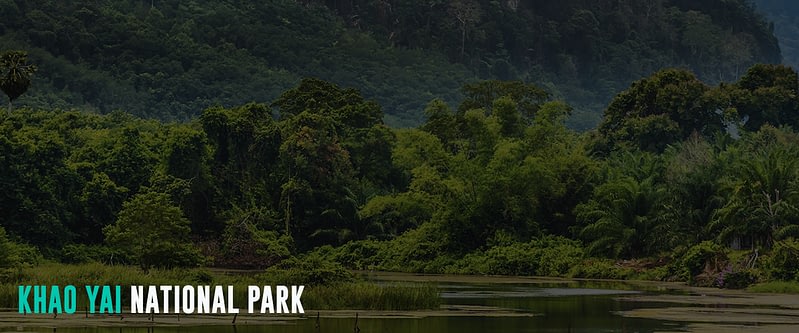
Khao Yai National Park, Thailand’s first national park, is a great place to see elephants and many other tropical creatures in their natural habitat. A UNESCO World Heritage Site, the park spans 2,168 sq. km over four provinces and has a diverse landscape that includes jungle, streams, waterfalls, and various flora and fauna. It is home to over 800 fauna species, including 112 mammal species, 200 reptiles and amphibian species, and 392 bird species. And because of over 350 rare and endangered species, the park is popular among bird watchers. Khao Yai is essential for conserving globally threatened and endangered mammal, bird, and reptile species. Moreover, Khao Yai is also home to many waterfalls, including the 150-meter-tall Haew Narok and the even more famous Haew Suwat.
Visitors can enjoy activities such as trekking, camping, and wildlife watching.
Sukhothai Historical Park
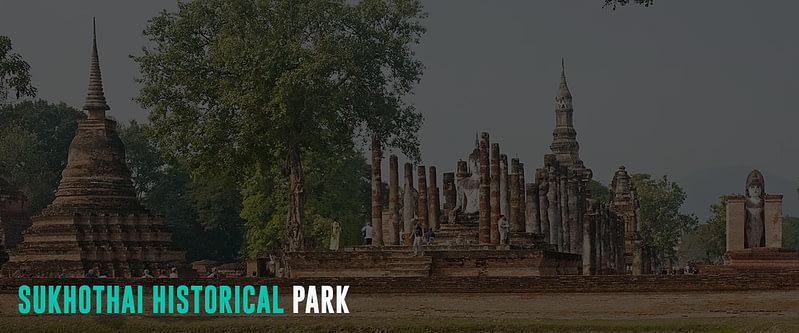
Sukhothai Historical Park is a UNESCO World Heritage Site near Sukhothai in north central Thailand. The park covers the ruins of Sukhothai, the capital of the Sukhothai Kingdom in the 13th and 14th centuries. The city’s defensive walls form a rectangle with gates in the center of each division, and inside are the remains of the royal palace and twenty-six temples, including Wat Mahathat. The park spans 70 square kilometers and has 193 ruins.
Sukhothai was the first capital city of Thailand and had fine monuments illustrating the beginnings of Thai architecture. The Fine Arts Department of Thailand maintains the park with help from UNESCO. Visitors can explore the ruins and learn about the Sukhothai style of architecture.
Bangkok
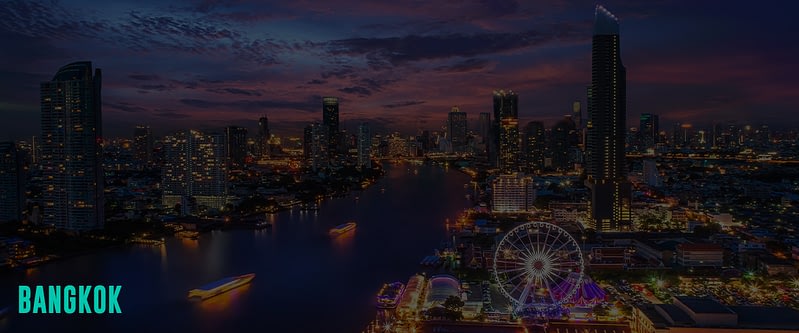
Bangkok, the capital of Thailand, is a vibrant and bustling metropolis with a rich cultural heritage that attracts millions of tourists annually. The city is famous for its temples, palaces, street food, stunning architecture, and vibrant street life.
One of the most popular attractions in Bangkok is the Grand Palace, which features impressive Thai-style architecture and houses the iconic Emerald Buddha. Another must-visit attraction is the Wat Pho temple complex, home to the famous Reclining Buddha statue. The complex also offers traditional Thai massage services, a must-try for tourists seeking relaxation and wellness.
For those interested in shopping, Bangkok offers a variety of options ranging from high-end luxury malls to bustling street markets. Chatuchak Weekend Market is a popular destination, with over 8,000 stalls selling everything from fashion and accessories to antiques and artwork. A unique experience is visiting the floating markets, such as Damnoen Saduak.
Food is another highlight of Bangkok, with its famous street food scene offering a wide range of delicious and affordable dishes. Must-try dishes include Pad Thai, Tom Yum Goong, and Mango Sticky Rice.
For a unique cultural experience, visitors can take a boat tour along the Chao Phraya River, which runs through the heart of Bangkok. In addition, visitors can see historical landmarks along the river, like the Temple of Dawn and the Royal Barges Museum.
Bangkok also offers a vibrant nightlife scene, with various bars, clubs, and entertainment venues catering to different tastes and budgets. Khao San Road is a popular destination for backpackers and budget travelers, while Thonglor and Ekkamai are known for their trendy bars and clubs.
Other popular activities in Bangkok include visiting the Jim Thompson House Museum and taking a tuk-tuk ride through the city’s bustling streets.
Chiang Mai
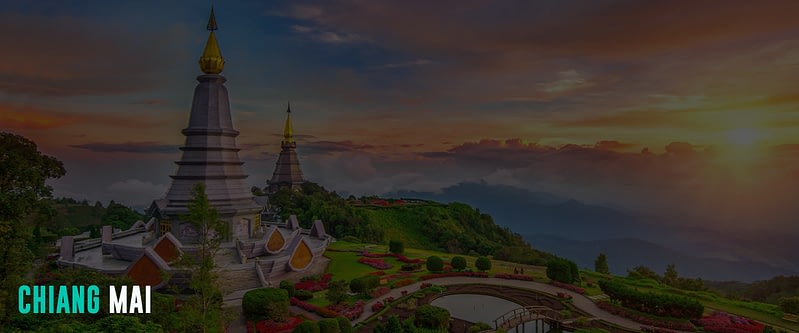
Located in northern Thailand, Chiang Mai is known for its rich history, beautiful temples, and natural beauty. Mountains surround the city and are great places to explore traditional Thai culture. The city is home to more than 300 temples, each with its unique style of architecture and cultural significance.
One of the most popular attractions in Chiang Mai is the Old City. This walled city is home to many ancient temples, such as Wat Phra Singh and Wat Chedi Luang, which feature impressive architecture and stunning Buddhist art. The Old City also offers a unique shopping experience, with its many markets and street vendors providing traditional Thai handicrafts and delicious street food.
Another must-visit attraction in Chiang Mai is Doi Suthep, a beautiful mountain outside the city. The mountain is home to Wat Phra That Doi Suthep, one of Thailand’s most sacred Buddhist temples. Visitors can hike to the top of the hill to see the stunning temple and enjoy breathtaking views of the city below.
For those seeking an authentic cultural experience, Chiang Mai offers many opportunities to interact with the local ethnic groups. For example, visitors can participate in traditional cooking classes, trekking, and homestays with hill tribal families.
Other popular activities in Chiang Mai include visiting the night markets, exploring the ancient ruins of Wiang Kum Kam, and relaxing in the beautiful Bua Tong Waterfalls.
Phuket
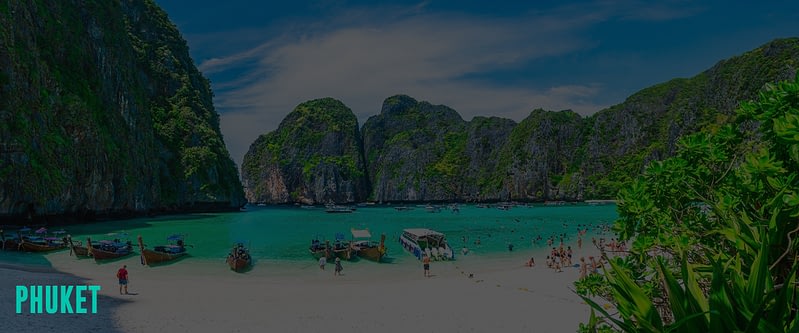
This beautiful island in southern Thailand is known for its stunning beaches, crystal-clear waters, and lively nightlife.
Phuket is the largest island in Thailand and is located in the Andaman Sea. It is famous for its magnificent beaches with crystal-clear waters, such as Rawai, Patong, Karon, Kamala, Kata Yai, Kata Noi, and Mai Khao. Laem Phromthep’s viewpoint offers a beautiful sunset view. Apart from the beaches, the island boasts fantastic classical architecture, fabulous foods, and lively nightlife. Travel options to the island are plentiful. The beaches on the south coast are crowded, while the north is peaceful.
Diving, snorkeling, windsurfing, and sailing are some of the popular activities available on main beaches. However, it is advisable to observe the red flag before swimming.
And what’s best about Phuket is there’s space for everyone, whether backpackers, luxury jet setters, or a traveling family on the hunt for seaside fun.
Ayutthaya Historical Park
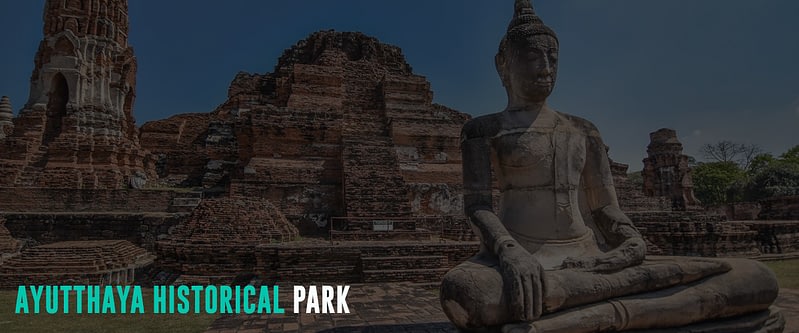
Ayutthaya Historical Park is a popular tourist attraction that contains the ruins of Thailand’s second capital, which dates back to 1350. The city was destroyed in 1767 by the Burmese army, but renovations that began in the late 1960s have restored it to much of its former glory.
The park is a UNESCO World Heritage Site, home to over a hundred wats, chedis, prangs, and thousands of Buddha statues. Visitors can explore the eclectic array of architectural styles amid its grid-like patterns of moats, roads, and canals. The park comprises four temples: Wat Phra Ram, Wat Phra Si Sanphet, Wat Mahathat, Wat Ratchaburana; the Royal Palace; and Wiharn Phra Mongkol Bophit. Some stunning sights include the temple that houses the 12-meter-long reclining Buddha and the tree roots embracing a Buddha’s head.
Ayutthaya is a short bus trip or train ride from Bangkok and is convenient for a day trip or spending a few days exploring the ancient capital. Activities for tourists include renting a push-bike to tour both the old city and the new.
Phang Nga Bay
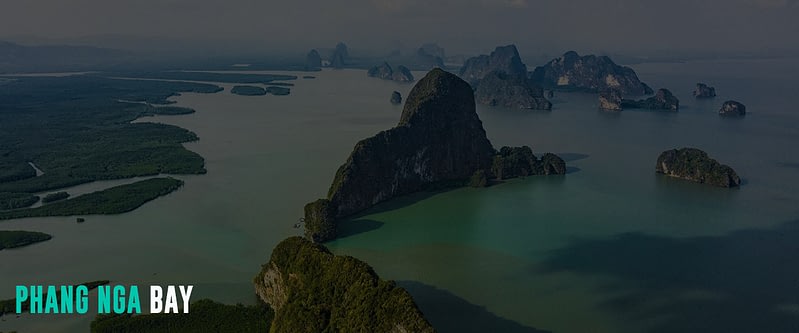
Phang Nga Bay is a protected national park located in southern Thailand, between the island of Phuket and the mainland. The bay covers 400 km2 and is home to limestone cliffs, caves, and small islands. The Ao Phang Nga National Park has protected the bay’s natural beauty since 1981. Visitors can take a day trip or island-hopping tour to explore the bay, which includes famous islands like James Bond Island. One must-see attraction in the bay is the Similan Islands, which have lush jungles, white sandy beaches, and massive boulders. One of the best ways to explore the bay is by sea kayak, which allows tourists to enter the caverns and sea caves.
Primary Spoken Language(s)
Thai is the official language in Thailand. It is the principal language of education and government and is widely spoken nationwide. However, many Thais also speak and understand English, particularly in Bangkok and major tourist areas.
Safety Concerns
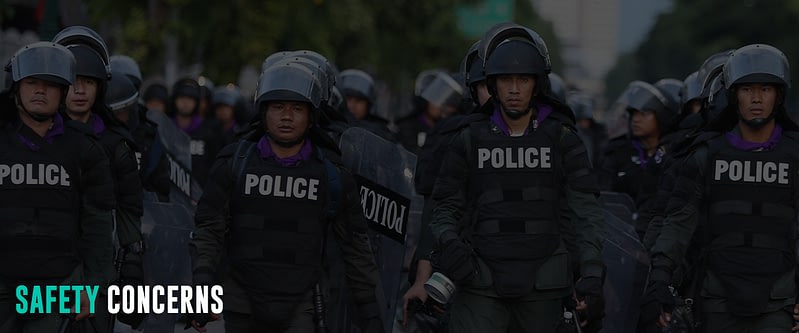
Thailand ranks 103rd out of 163 countries on the 2022 Global Peace Index. Also, Thailand has a Level 1 Travel Advisory from the US Department of State. Hence, travelers in Thailand can take standard precautions when exploring the country.
Petty thefts, including bag snatching and pickpocketing, occur in crowded areas such as public transportation. Hence, keep an eye on your belongings, and avoid carrying lots of money and jewelry in one place. Always stick to metered taxis to avoid being ripped off. Always wear helmets when riding motorbikes, and avoid driving at night on Phuket and Samui’s narrow, mountainous, and twisty roads.
Due to civil unrest and other insurgent activities, reconsider trips to Yala, Pattani, Narathiwat, and Songkhla provinces. Lastly, avoid areas with ongoing demonstrations and protests, and monitor local media for the latest news.
Local Laws
Commercial surrogacy, E-cigarettes, e-baraku, vaporizers, and refills are illegal. Also, smoking on some beaches is unlawful.
Local laws in Thailand impose severe death penalties on drug offenders. Death penalties are also given for serious crimes, crimes against the state, and offenses against the monarchy. Do not defame, insult, or threaten the monarch of Thailand, even to the national currency bearing the image of the king, and be familiar with the Lèse-majesté law.
Health
Medical Tourism is common and inexpensive in Thailand. However, research the medical service provider and avoid uncertified and unregistered establishments.
Get medical advice and prescriptions when buying medicines at pharmacies to avoid inconvenience. Also, be careful of some insect and mosquito-borne diseases in hilly and forested areas, such as malaria, Zika virus, dengue, chikungunya, Japanese encephalitis, and filariasis.
Natural Disaster
Thailand experiences natural disasters and severe weather. These include storms, floods, earthquakes, and tsunamis. Hence, always check the weather forecasts and updates from the Thai Meteorological Department when planning your itinerary. Also, consider checking the Mekong River Commission portal for the river forecast and flood guidance.
Budget Considerations
Travelers to Thailand can explore the country on a modest budget or splash on luxury hotels and beach resorts. But no matter their budget or interests, Thailand has everything for everyone!
Accommodation
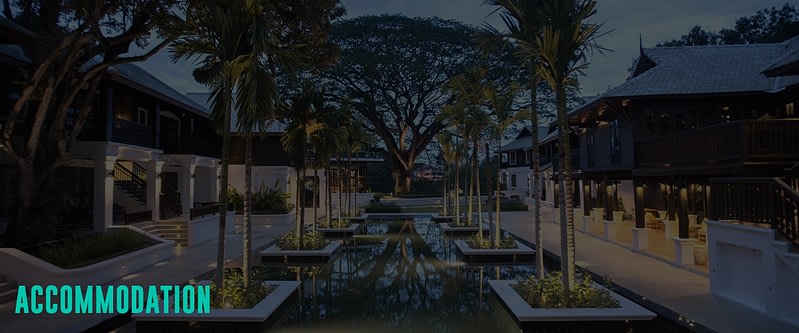
Thailand’s accommodations vary from cheap to luxurious hotels and fancy beach resorts. Hostels are widely available nationwide for as low as $6 per night for a dorm bed. Free wifi is standard, while some have complimentary breakfast. Private rooms and budget hotels are also very cheap, ranging between $18 and $35. Depending on the location, travelers can enjoy the comfort of a three-star hotel or resort and spend around $35 to $50 per night, including breakfast. They can also splash out on five-star hotels and beach resorts from $75 and about $450 on a junior suite.
Travelers will also find guest houses that cost $10 for a private room or an entire 4-bedroom house at $75 per night from Airbnb.
Food
Thai cuisines have layers of flavor from herbs, spices, and fresh ingredients. Popular dishes include pad thai, tom yum goong, khao man gai, and satay.
Foods in Thailand are cheap. Street foods are almost everywhere and typically cost $0.40, and expect to pay $1.30 to $2.30 for a filling street food meal. Food courts in malls and local sit-in restaurants have combo meals between $1.75 and $3, while food chains cost around $5. Travelers who want to enjoy three-course meals in a mid-range restaurant spend $12 and $25 in fancy hotel restaurants.
Since Thai foods are affordable, travelers do not need grocery shop unless they want fresh fruits or salads.
Attractions and Transportation
Admission to parks and museums in Thailand costs between $1.50 to $6. Travelers can join jungle trekking for $60 daily, a two-dive boat for $75, or a PADI certification dive with accommodation at $300. Make sure to book on the ground from registered operators and travel agencies. Also, try to maximize your bargaining skills.
For budget travelers, public transportation in Thailand is affordable. A bus ticket starts at $0.25, while the Metro and Skytrain begin at $0.45. Taxis are inexpensive and widely available in Thailand but always stick to metered taxis. Tuktuks are another option, but you must negotiate the price before getting in. Motorbike taxis are standard and cost $1 to $2 per trip. Again, do not forget to negotiate the price before you take off. Lastly, travelers who want more flexibility and comfort to explore many destinations can rent a small car for $26 daily for a multi-day rental and $10 for a motorbike.
Average Two-Week Cost
Budget travelers in Thailand can live with a $25 daily budget or $350 for two weeks. The budget covers the costs of sleeping in hostel dorm beds; dining in street foods, food courts, or local diners; taking buses and trains for transport; mainly doing free activities, and visiting some parks and museums.
On the other hand, mid-range travelers spend at least $60 daily or $840 for two weeks. It includes staying in a three-star hotel, taking occasional taxis, dining in local restaurants, doing a few paid activities, and visiting several destinations.
Lastly, travelers can enjoy luxury and privacy in Thailand from $125 daily or $1750 for two weeks. It includes staying in five-star hotels, splashing out on meals, taking domestic flights and renting a car for transport, and availing of all the paid tours and activities they want. So for them, the sky is the limit for travel.
Customs And Import Restrictions
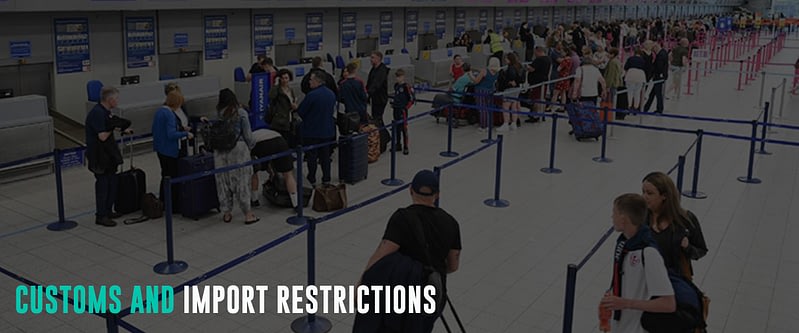
Thailand customs allows travelers to enter Thailand with personal effects worth less than ฿20,000 ($585) without paying import fees. It is provided the items are specifically for personal or professional use, the amount of goods is reasonable, and the items are not restricted or prohibited. Under duty-free regulations, they can also bring alcohol and tobacco products, with maximum amount as follows:
- 250 grams of cigars or smoking tobacco, or 200 cigarettes
- 1 liter of wine or liquor
Thailand Customs Department is also responsible for restricting the entry of certain goods and will require permits from relevant authorities. These include:
| TYPES OF GOODS | ISSUING AUTHORITIES |
| Types of Goods Issuing Authorities Buddha images, artifacts/objects, antique | Fine Arts Department |
| Guns, bullets, explosives, and the equivalents of guns | Department of Provincial Administration, Ministry of Interior |
| Plants and their parts | Department of Agriculture |
| Living animals and carcasses | Department of Livestock Development |
| Food, medicine, cosmetics, and food supplement | Food and Drug Administration (FDA) |
| Vehicle parts | Ministry of Industry |
| Cigarettes, tobacco, and alcoholic beverages | Excise Department |
| Communication Radio Devices and telecommunications equipment | Office of The National Broadcasting and Telecommunications Commission |
Thai Customs completely prohibits the import and export of certain goods as follows:
- Narcotics
- Pornographic materials
- Counterfeit trademark goods and IPR infringing goods
- Fake notes or coins
- Endangered animals or CITES-listed wildlife
Climate Considerations

Thailand enjoys a tropical climate influenced by summer and winter monsoons. As a result, Thailand has six months of rain during the rainy season, three months of dry and refreshing winds during the winter, and three months of heat during the summer. It is a rainy season from mid-May to mid-October, with August and September as the wettest months. Winter from mid-October to mid-February brings dry weather and mild temperature. Lastly, Thailand experiences warm weather during summer from mid-February until mid-May
Thailand’s average temperature ranges from 18 to 38 °C, though it can reach 40 °C from March to May.
Primary Transportation Options
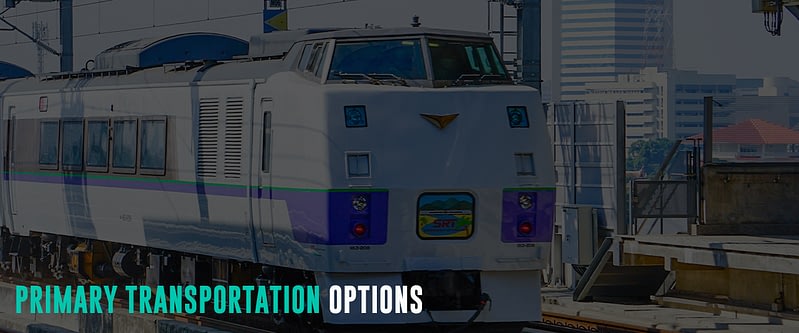
Thailand is a big country and takes time to navigate. Nonetheless, travelers can have multiple options to explore the postcard-perfect beaches, lush jungles, and great country of Thailand!
Air
Flying is the quickest but most expensive way to get around Thailand. Therefore, it is ideal for travelers who want to visit more places in a limited time.
Thailand is easily connected through its many airports, with Don Mueang International Airport and Suvarnabhumi International Airport as the main airports. And while Thai Airways is the largest carrier, numerous budget airlines serve domestic and international flights in Thailand. Some budget carriers include Thai Smile, Bangkok Airways, Thai Lion Air, Thai Vietjet, Thai AirAsia, Nok Air, and Thai Summer Airways. The competition among budget airlines leads to affordable fares between large cities like Bangkok and Phuket. However, flights to the islands, particularly in Koh Samui, are more expensive because of the monopoly pricing by Bangkok Airways. For example, travelers can book a one-way ticket from Bangkok to Phuket for around $21 to $24. Meanwhile, flights to Koh Samui from Bangkok almost tripled to $62.
Remember to book early and save on fares, as the budget carriers usually offer around 30-50% off tickets when they have sales. But remember that each airline has different policies, and budget carriers typically charge extra for baggage fees, meals, and seats.
Boat
Thailand has two long coastlines: the Gulf of Thailand and the Andaman Coast islands. Hence, boat transportation is a popular mode of transport in Thailand, especially for travel to the many islands and coastal areas. Several operators and companies provide boat services, including Lomprayah, Seatran Ferry, and Songserm.
Popular ferry routes include the 30-45 minutes trip from Koh Samui to Koh Phangan for $6-12 and the 2-3 hours trip from Koh Samui to Surat Thani for $9-16. Another popular route is from Phuket to Phi Phi Islands for 1-2 hours at $11-16.
Visitors can also charter a boat or join a cruise in Bangkok for snorkeling, fishing, or squad fishing in other provinces.
Train
Thailand has a decent rail network operated by the State Railway of Thailand (SRT), a government-owned company. The SRT has various train categories, including local, express, and sleeper trains. Its rail network covers 4,500 kilometers (2,796 miles) and is one of the best and cheapest ways to get around the country. However, as of now, note that there is no high-speed rail in Thailand. So, do not rush when traveling to Thailand by train.
The travel time and ticket cost can vary depending on the train type, class of service, and time of day. For example, Bangkok to Chiang Mai takes 11-14 hours and costs $26 (day train) to $31 (night train) for a second-class seat, while a first-class sleeper can cost around $54 to $76.
Discounts are available for children aged 3-11 (50% discount) and older persons aged 60 and above (10% discount). The SRT also offers a “Thailand Rail Pass” for unlimited train travel within a certain period for a fixed price. It’s best to check the SRT website or inquire at the train station for the latest information and the timetable. Additionally, the SRT occasionally offers special promotions and discounts, so it’s worth watching.
Lastly, remember to book a bed on the night train at least three days ahead to ensure a reservation and weeks in advance for the first-class sleeper, especially during the high season.
Underground Bangkok MRT Subway
Bangkok’s modern transportation system features electric rail lines that ease traffic and make public transport comfortable and convenient around the capital city. In addition, the fare is affordable for a single journey token for as low as $0.45. Visit the Bangkok Expressway & Metro portal for more information, timetable, and route map.
Bangkok BTS Skytrain
Bangkok’s BTS Skytrain is the safest, most comfortable, and most convenient way around the capital. It has transformed public transportation into a relaxing ride through central Bangkok – lifting commuters above the chronic congestion, noise, and pollution of the streets below. And like everything in Bangkok, the fare is inexpensive at $0.45 for a single journey ticket. Travelers can also get a one-day pass (unlimited rides) at $4.40. Visit the BTS Skytrain website for more information and timetable.
Airport Rail Link
Travelers from and to the Suvarnabhumi Airport can easily travel to the city center through the Airport Rail link train service. It runs at a maximum speed of 160 kilometers per hour on an elevated track, which covers approximately 28 kilometers. The link passes through 8 stations: Phyathai, Rajprarop, Makkasan and City Air Terminal, Ramkhamhaeng, Hua Mark, Thab Chang, Lad Krabang, and Suvarnabhumi Station.
Travelers have three options of service which operate daily from 0600-2400 hours:
- SA Express train from City Air Terminal or Makkasan Station to Suvarnabhumi Airport within 15 minutes without stopping at any station.
- SA Express train from Phyathai Station to Suvarnabhumi Airport within 20 minutes without stopping at any station.
- City Line train service between Phyathai Station and Suvarnabhumi Airport within 30 minutes and stops at every station. In addition, the line can connect the MRT Subway at Makkasan Station and BTS Skytrain at Phyathai Station.
The standard fare is between $0.45 and $1.30, depending on the distance. Visit the S.R.T. Electrified Train Company for more information and timetable.
Bus
Buses are the cheapest option to go almost anywhere in Thailand and the broadest form of transportation. They are comfortable, spacious, and air-conditioned. Buses have multiple stops in towns to pick up and drop off passengers and be sure to inform the driver exactly where you want to go. For example, a single bus ticket from Bangkok to Chiang Mai costs $17 on a day bus and $22.50 on a night bus.
Tourist buses are also widely available and more convenient, although expensive. Nonetheless, they travel faster and only stop in tourist areas without worrying about where you are.
Car
Car rentals in Thailand are expensive compared to taking the bus and train as transportation. Also, the roads are pretty congested in the cities. However, travelers who want more privacy and flexibility can do so from local or international agencies. They are available in big cities, airports, buses, and train stations. The car rental fee starts at $26, while $10 for a scooter. Travelers can also hire a car and driver for convenience and safety.
Taxi
Taxi services are widely available nationwide in Thailand. Also, Bangkok and big provinces have metered taxis easily identifiable by the sign on top of the cab. Travelers can hail them from taxi stands, along the streets, or through various mobile booking apps.
Aside from taxi cabs, there are also motorcycle taxis in Thailand. They are found close to street intersections and small alleys for quick transportation and short distances.
Tuk Tuk
Tuk Tuk is a three-wheeled motorcycle which becomes a symbol of Thailand. They are found around Bangkok and in most provinces. Moreover, Tuk Tuk is ideal for short-distance trips.
Start Trip Planning
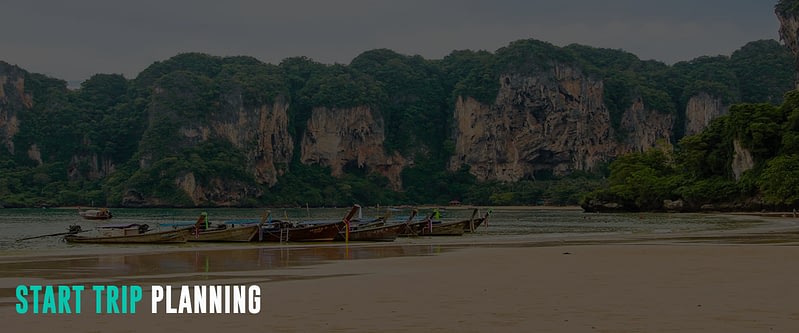
Travel-Wise is made from the ground up to help people travel more, break down the barriers that make it tough to get going, and start your journey as painlessly as possible. Bookmark our other Country Guides to help kick-start your research for future travels. We also offer templated itineraries from our staff and community that help serve as a building block for your trip plans. Alternatively, we also utilize AI to offer a way to generate itinerary ideas. This saves much time just getting you up and running with a template. From there, you can use the trip planner to create your customized itinerary, invite friends and family for collaboration, find others from Travel-Wise to join the trip, book and track important information, journal, and share your experiences at the end or along the way!

